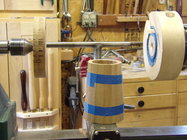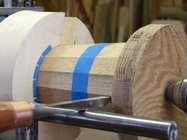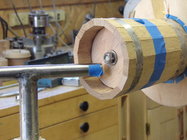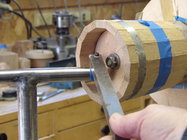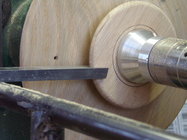I'm working on a set of a dozen smallish staved vessels. These are approximately 6" tall, 5.25" diameter at top, and 4" at bottom. I'd like to set up a half dozen glue blocks to facilitate working in sets. (completing the same step on multiples, then moving to next step) To this end, glue blocks will be employed to hold the bases. Initially to true them up, but then to turn the rabbets, and ultimately glue the top to the base for the final turning. I don't have but 2 spare face plates, so I'm thinking about other options.
The glue blocks are cut from dry 8/4 cherry. The options available are to turn a tenon or recess on the glue block and use a chuck. Swapping glueblocks as needed. The second option would be drilling each glue block and tapping for 3/4 x 10 threads and use the robust drive center. Is one of these options better than the other? By better I'd be looking for consistency in remounting and ensuring the vessels run true. I'd like to avoid buying more face plates.
The glue blocks are cut from dry 8/4 cherry. The options available are to turn a tenon or recess on the glue block and use a chuck. Swapping glueblocks as needed. The second option would be drilling each glue block and tapping for 3/4 x 10 threads and use the robust drive center. Is one of these options better than the other? By better I'd be looking for consistency in remounting and ensuring the vessels run true. I'd like to avoid buying more face plates.

